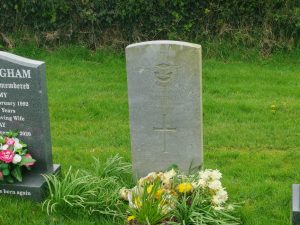Glendermott Churchyard and Cemetery

Glendermott Churchyard and Cemetery
Glendermott Cemetery is located on the Church Brae in and beside the Church of Ireland grounds in the Waterside area of Londonderry.
Glendermott Parish Church which stands on these grounds, has been there for more the 250 years having been built in 1753. This church had replaced the previous Ivy Church which had gone through a troubled history. Established in 1622, it had been built and destroyed twice, first by rebellion in 1641[1] and then by a retreating Jacobite army in 1689 at the end of the Siege of Derry.[2] On each occasion, it was rebuilt. It is possible though that a monastic church may have existed on these grounds before 1622, but unfortunately there is no evidence to prove this.
Like most churches in the UK this has a memorial, “The Last Post” situated at the front commemorating the First World War. Some of the burials for the First World War are in the actual churchyard. Other war graves are in Glendermott Church of Ireland cemetery beside it.
There are eighteen service personnel buried in Glendermott Cemetery, seventeen of them are men and there is a lady also.
This cemetery has seven personnel from the Second World War and eleven from the Great War. Six of these served with the 10th Battalion of the Inniskilling Fusiliers, including their commanding officer, who was wounded on the eve of the Great Assault on the Somme. A bad Omen for all those involved.

[1] Irish rebellion of 1641 began during the 23rd of October of that year in the Province of Ulster. A bloody affair that saw the local Catholic Irish rise against the Protestant settlers from England and Scotland during the Plantation of Ulster, killing around a quarter of the settlers in unstoppable massacres. The rebellion came to its end 8 years later when Oliver Cromwell’s armies landed and defeated and equally massacred the local Irish Catholics.
[2] Siege of Derry (1688-1689), a siege of a walled city located around 8 miles from Eglinton (Muff).






